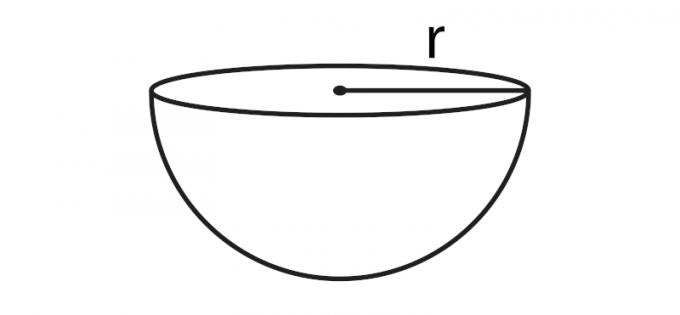A rooting It is a mathematical operation, just like addition, subtraction, multiplication, division and potentiation. In the same way that subtraction is the inverse operation of addition and division is the inverse of multiplication, radiciation is the inverse operation of potentiation. Thus, for real positive x and y and integer n (greater than or equal to 2), if x raised to n is equal to y, we can say that the nth root of y is equal to x. In mathematical notation: \(x^n=y\Rightarrow\sqrt[n]{y}=x\).
Read too:Potentiation and radiciation of fractions — how to do it?
Summary about rooting
Rootification is a mathematical operation.
Radiciation and potentiation are inverse operations, that is, for positive x and y, \(x^n=y\Rightarrow\sqrt[n]{y}=x\).
Calculating the nth root of a number y means finding the number x such that x raised to n is equal to y.
Reading a root depends on index n. If n = 2, we call it the square root, and if n = 3, we call it the cube root.
In operations with radicals, we use terms with the same index.
Radiciation has important properties that facilitate its calculation.
Video lesson on rooting
Representation of a root
To represent a rooting, we must consider the three elements involved: radicand, index and root. The symbol \(√\) is called a radical.
\(\sqrt[n]{y}=x\)
In this example, y is the radicand, n is the index and x is the root. It reads “nth root of y is x”. While x and y represent positive real numbers, n represents an integer equal to or greater than 2. It is important to note that for n = 2, the index can be omitted. So, for example, \(\sqrt[2]{9}=\sqrt9\).
We can represent a radiciation using the radicand with a fractional exponent. Formally, we say that the nth root of \(y^m\) can be written as y raised to the fractional exponent \(\frac{m}n\).
\(\sqrt[n]{y^m}=y^\frac{m}{n}\)
See the examples:
\(√5=5^\frac{1}{2}\)
\(\sqrt[3]{2^4}=2^\frac{4}{3}\)
Differences between radiciation and potentiation
Potentiation and radiation are inverse mathematical operations. This means that if \(x^n=y\), then \(\sqrt[n]{y}=x\). It seems difficult? Let's look at some examples.
If \(3^2=9\), then \(\sqrt[2]{9}=3\).
If \(2^3=8\), then \(\sqrt[3]{8}=2\).
If \(5^4=625\), then \(\sqrt[4]{625}=5\).
How to read a root?
To read a root, we must consider the index n. If n = 2, we call it the square root. If n = 3, we call it the cube root. For values of n larger, we use the nomenclature for ordinal numbers: fourth root (if n = 4), fifth root (if n = 5) and so on. See some examples:
\(\sqrt[2]{9}\) – square root of 9.
\(\sqrt[3]{8}\) – cube root of 8.
\(\sqrt[4]{625}\) – fourth root of 625.
How to calculate the root of a number?
We will see below how to calculate the root of a positive real number. To calculate the root of a number, we must consider the related inverse operation. That is, if we look for the nth root of a number y, we must look for a number x such that \(x^n=y\).
Depending on the value of y (that is, the radicand), this process can be simple or laborious. Let's look at some examples of how to calculate the root of a number.
Example 1:
What is the square root of 144?
Resolution:
Let's call the number we are looking for x, that is, \(\sqrt{144}=x\). Note that this means looking for a number x such that \(x^2=144\). Let's test some possibilities with natural numbers:
\(9^2=81\)
\(10^2=100\)
\(11^2=121\)
\(12^2=144\)
Therefore, \(\sqrt{144}=12\).
Example 2:
What is the cube root of 100?
Resolution:
Let's call the number we are looking for x, that is, \(\sqrt[3]{100}=x\). This means that \(x^3=100\). Let's test some possibilities:
\(2^3=8\)
\(3^3=27\)
\(4^3=64\)
\(5^3=125\)
Note that we are looking for a number that is between 4 and 5, as \(4^3=64\) It is \(5^3=125\). So, let's test some possibilities with numbers between 4 and 5:
\(4,1^3=68,921\)
\(4,2^3=74,088\)
\(4,3^3=79,507\)
\(4,4^3=85,184\)
\(4,5^3=91,125\)
\(4,6^3=97,336\)
\(4,7^3=103,823\)
As \(4,6^3 \) is a number close to and less than 100, we can say that 4.6 is an approximation to the cube root of 100. Therefore, \(\sqrt[3]{100}≈4.6\).
Important:When the root is a rational number, we say that the root is exact; otherwise, the root is not exact. In the example above, we determine a range between exact roots where the searched root is found:
\(\sqrt[3]{64}
\(4
This strategy is very useful for calculating approximations of a root.
Operations with radicals
In operations with radicals, we use terms with the same index. Considering this, read the following information carefully.
→ Addition and subtraction between radicals
To solve an addition or subtraction between radicals, we must calculate the root of each radical separately.
Examples:
\(\sqrt[3]{27}+\sqrt[3]{216}=3+6=9\)
\(\sqrt{400}-\sqrt{169}=20-13=7\)
Important: It is not possible to operate radicals in addition and subtraction operations. Note that, for example, the operation \(\sqrt4+\sqrt9\) results in a different number of \(\sqrt{13}\), even if \(4+9=13\).
\(\sqrt4+\sqrt9=2+3=5\)
\(\sqrt{13}≈3.6\)
→ Multiplication and division between radicals
To solve a multiplication or division between radicals, we can calculate the root of each radical separately, but we can also use the radiciation properties, which we will see below.
Examples:
\(\sqrt{121}⋅\sqrt{49}=11⋅49=539\)
\(\sqrt[3]{512}÷\sqrt[3]{64}=8÷4=2\)
What are the properties of radiciation?
→ Property 1 of radiciation
If y is a positive number, then the nth root of \(y^n\) is equal to y.
\(\sqrt[n]{y^n}=y\)
See the example:
\(\sqrt[3]{2^3}=\sqrt[3]{8}=2\)
This property is widely used to simplify expressions with radicals.
→ Property 2 of radiciation
The nth root of the product \(y⋅z\) is equal to the product of the nth roots of y and z.
\(\sqrt[n]{y\cdot z}=\sqrt[n]{y}\cdot \sqrt[n]{z}\)
See the example:
\(\sqrt{36 ⋅ 196}=\sqrt{36}⋅\sqrt{196}=6⋅14=84\)
Important: When we calculate the root of a large number, it is very useful factor (decompose) the radicand into prime numbers and apply properties 1 and 2. See the following example, in which we want to calculate \(\sqrt{7744}\):
\(7744=2^2⋅2^2⋅2^2⋅11^2\)
Like this,
\(\sqrt{2^2⋅2^2⋅2^2⋅11^2}=\sqrt{2^2}⋅\sqrt{2^2}⋅\sqrt{2^2}⋅\sqrt{11 ^2}= 2⋅2 ⋅2⋅11 = 88\)
→ Property 3of rooting
The nth root of the quotient \(\frac{y}z\), with \(z≠0\), is equal to the quotient of the nth roots of y and z.
\(\sqrt[n]{\frac{y}{z}}=\frac{\sqrt[n]{y}}{\sqrt[n]{z}}\)
See the example:
\(\sqrt[a]{\frac{125}{64}}=\frac{\sqrt[3]{125}}{\sqrt[3]{64}}=\frac{5}4\)
→ Property 4 of radiciation
The nth root of y raised to an exponent m is equal to the nth root of \(y^m\).
\((\sqrt[n]{y})^m=\sqrt[n]{y^m}\)
See the example:
\((\sqrt[3]{8})^2=\sqrt[3]{8^2}=\sqrt[3]{64}=4\)
See too: What are the properties of potentiation?
Solved exercises on radiciation
Question 1
(FGV) Simplifying \(2\sqrt3+2\sqrt12-2\sqrt{75}\), you get:
A) 0
B) - 23
C) - 43
D) - 63
D) - 83
Resolution:
Alternative C.
Note that using the radiciation properties, we have
\(2\sqrt{12}=2⋅\sqrt{3⋅ 4}=2⋅\sqrt3⋅\sqrt4=2⋅\sqrt3⋅2=4\sqrt3\)
\(2\sqrt{75}=2⋅\sqrt{25⋅3}=2⋅\sqrt{25}⋅\sqrt3=2⋅5⋅\sqrt3=10\sqrt3\)
Thus, we can rewrite the expression of the statement as
\(2\sqrt3+4\sqrt3-10\sqrt3\)
Putting the term \(\sqrt3\) evidence, we conclude that
\(2\sqrt3+4\sqrt3-10\sqrt3=(2+4-10)⋅\sqrt3=-4\sqrt3\)
Question 2
(Cefet) By which number should we multiply the number 0.75 so that the square root of the product obtained is equal to 45?
A) 2700
B) 2800
C) 2900
D) 3000
Resolution:
Alternative A.
The number sought is x. Thus, according to the statement,
\(\sqrt{0.75⋅x}=45\)
Therefore,
\(0.75⋅x=45^2\)
\(0.75⋅x=2025\)
\(x=\frac{2025}{0.75}\)
\(x = 2700\)



